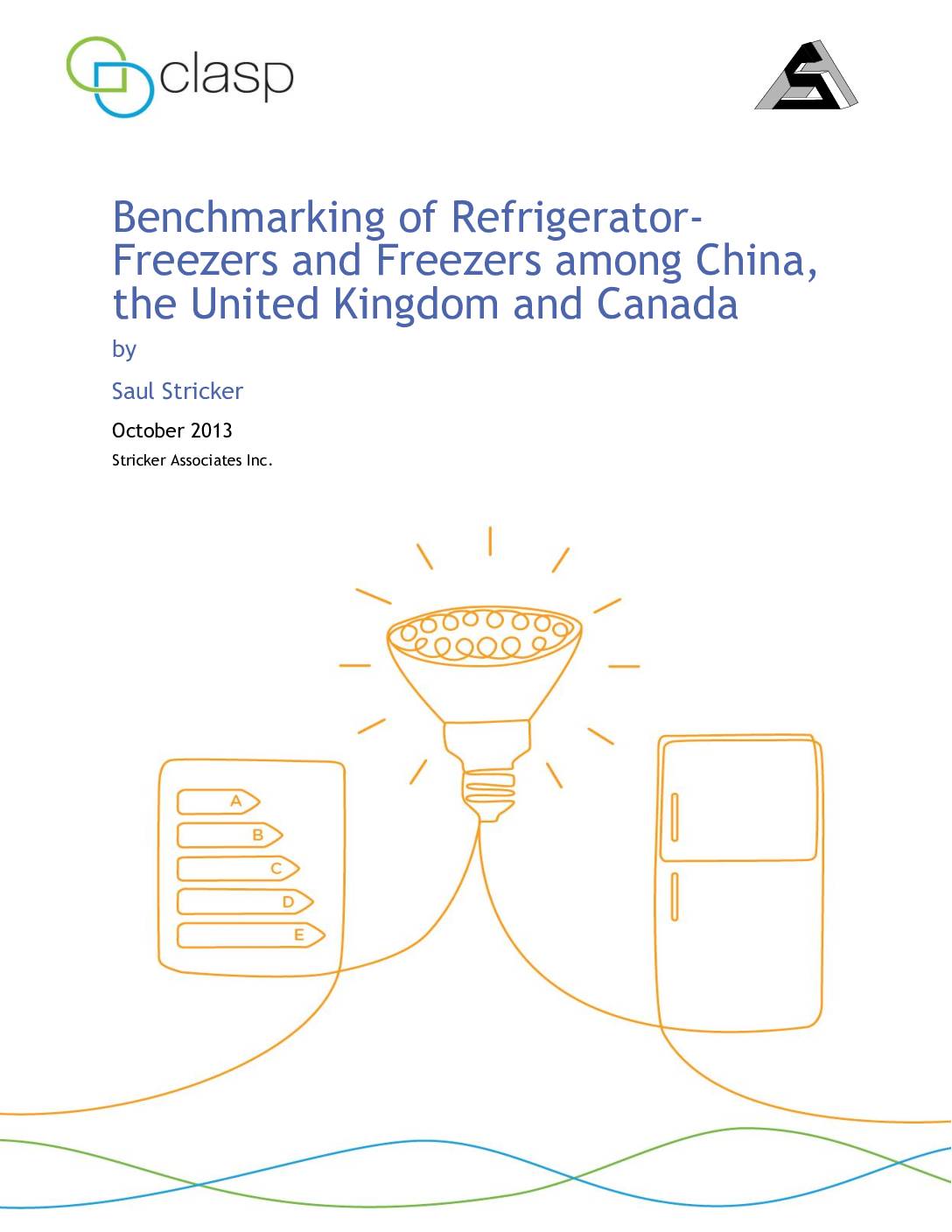In collaboration with Stricker Associates, CLASP conducted this benchmarking analysis to provide comparison of test procedures and calculation methods used in China, the United Kingdom (UK), and Canada.
Benchmarking China’s refrigerators is important because China’s manufacturing base and market for refrigerators are the largest in the world, and are expanding at a fast pace. At request of Chinese policymakers, CLASP conducted the analysis to provide a method for comparing the allowable maximum daily energy consumption per unit of adjusted volume for China, the UK and Canada on a common basis for household refrigerator-freezers and freezers and to inform the policy revision process in China.
Additionally, this analysis provides complementary data to International Energy Agency Efficient Electrical End-Use Equipment (IEA 4E)’s mapping and benchmarking study for domestic refrigerated appliances. Together, these benchmarking analyses provide detailed comparison on refrigerator energy efficiency policies across nine economies and enable policymakers to identify opportunities to optimize their policies for residential refrigerators based on international best practices.
Defining the maximum allowable energy consumption for refrigerators, refrigerator-freezers, and freezers is challenging because of variations in size, configuration, operating modes, controlled temperature, ambient operating temperature, and power input voltage and frequency.
Although many countries have selected international standards for measuring the performance and efficiency of these products, others have adopted their own systems for rating and labeling these appliances according to their energy consumption. Due to the variations in test procedures, it is difficult to directly compare refrigerator energy performance and efficiency policies across economies.
The comparison of performance of refrigerators requires that the models selected are most common, have comparable functionality, and can be compared on an equivalent performance basis, i.e. operating under equivalent conditions. The results of such performance comparisons can provide insight into the energy efficiency requirements, as well as the efficiencies of products available in these markets.
Benchmarking of appliances in different economies also requires a thorough review of the test methods in order to define a method for making adjustments so as to make the test results directly comparable. Applying the adjustments provides a means for rating the efficiency in each economy against one another, revealing the actual differences on a common basis.
Share this

Sectors: Equipment and appliances, Renewables
Country / Region: Asia, Canada, China, Europe, Northern America, United Kingdom
Tags: benchmarking, best practice, efficiency labelings, emission reduction international standards, energy, energy efficiency, energy input labelings, industrial benchmarking, manufacturing, temperatureKnowledge Object: Publication / Report
Published by: CLASP
Publishing year: 2014
Author: Saul Stricker
